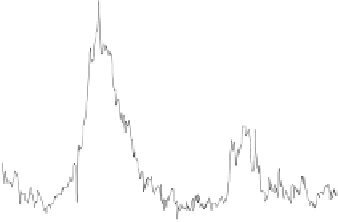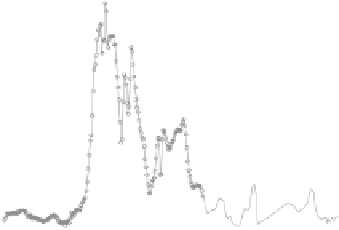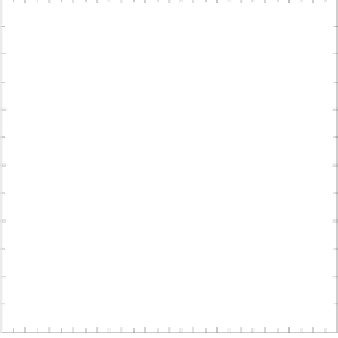Environmental Engineering Reference
In-Depth Information
aims to improve the treatment of radiation feedback in the GFS forecasts and to
provide aerosols boundary conditions for the regional air quality forecast system.
Results of two impact studies are presented, including (1) the impact of lateral
aerosol boundary conditions on aerosol air quality forecasts, and (2) the impact of
improved aerosol treatment on medium range weather forecasts.
2. Impact of Dynamic Boundary Conditions on Regional Air
Quality Forecasts
Under a NOAA-EPA partnership, NOAA is undertaking the responsibility to develop
and maintain the National Air Quality Forecasting (AQF) system (Davidson et al.,
2000). The AQF system is based on EPA Community Multi-scale Air Quality
(CMAQ) model driven by meteorological forecasts from NCEP North American
Meso (NAM) Model. Static lateral boundary conditions are currently used. During
Texas Air Quality study 2006, model inter-comparison team found all seven regional
air quality models missed elevated PM events, due to trans-Atlantic Saharan dust
storms. These events are re-visited here, using dynamic boundary conditions provided
from dust-only off-line GFS-GOCART system.
Figure 1
shows the observed and
modeled surface PM2.5 over an AIRNOW station at Texas. The incorporation of
long-range dust transport via lateral BCs leads to significant improvements in
model forecasts.
60
60
60
Corpus Christi - Nat, TX 2006
Corpus Christi - Nat, TX 2006
Corpus Christi - Nat, TX 2006
Observed
CMAQ base run
50
50
50
CMAQ+GFS-GOCART LBC
40
40
40
30
30
30
20
20
20
10
10
10
0
0
0
29JUL
29JUL
29JUL
31JUL
31JUL
31JUL
02AUG
02AUG
02AUG
04AUG
04AUG
04AUG
06AUG
06AUG
06AUG
08AUG
08AUG
08AUG
10AUG
10AUG
10AUG
Fig. 1.
Surface PM2.5 time series from the CMAQ-NAM forecasts with static BCs (in black
open circle) and dynamics BCs (in grey open circle), verified against AIRNOW observations (in
filled circle) at Corpus Christi, Texas, during 2006/07/29 to 2006/08/11 period














